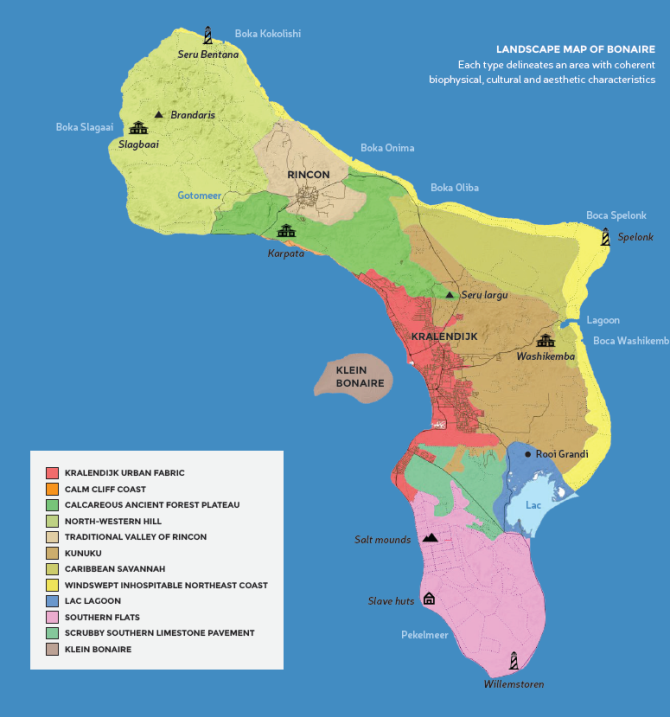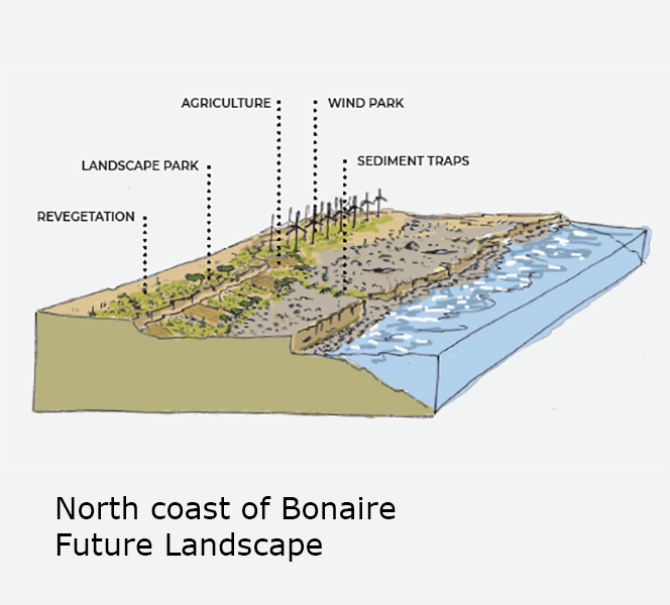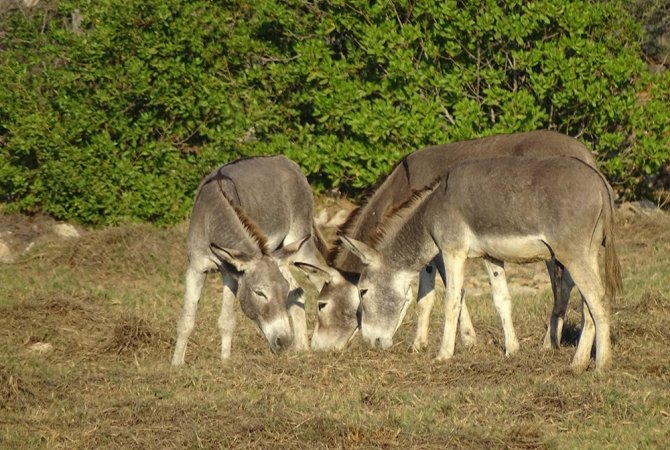
News
A nature inclusive vision for Bonaire
What would Bonaire look like in 2050? Experts from the island and Wageningen University & Research, The Netherlands addressed that question by working with stakeholders on the island to develop a vision for the future. In this, a sustainable future economic development and a nature inclusive society go hand in hand to maintain what is precious, and to improve what is already damaged or threatened. For each of Bonaire’s twelve landscapes a nature inclusive vision is given and combined together in the publication ‘BONAIRE 2050 - a nature inclusive vision’.
The very diverse landscapes of Bonaire range from dry cacti forests, traditional kunukus, coralline coasts, biodiverse reefs, to extensive salt flats; the diversity of culture is represented by vibrant villages and tasty traditional cuisine.

For each of the twelve landscapes a vision with potential nature inclusive measures was mapped out during design sessions, interviews and workshops with local experts, decision makers and researchers in the field of nature, culture, recreation, agriculture and governance.

Measures and challenges
The 3D drawings of each of the landscapes show measures such as rooftop water harvesting, reforestation and greening gardens using indigenous species, growing local food, creating cactus fences, installing solar panels and coral restoration to meet the challenges ahead. The challenges the island faces include managing (mass) tourism and population growth, preventing high erosion rates that are due to free-roaming cattle, recharging fresh water in the soil, increasing the use of renewable energy, and adaptation to sea level rise. The measures and challenges are symptomatic for many small islands the world over.

The project KB-36-005-002 ‘Nature Inclusive planning of Small Island Development States’ is funded through WUR Knowledge Basis programme ‘Nature inclusive transitions’.